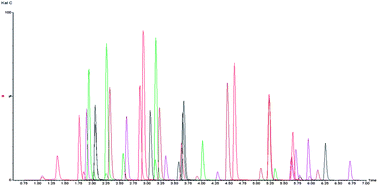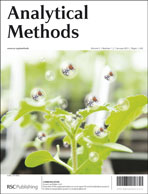
Mass spectral analysis of blood samples
Analysing blood samples for the presence of legal and illegal drugs can present a challenge to forensic scientists; blood is a complex matrix which requires cleaning up before analysis, and the standard tests tend to be specific to a single drug or drug class.
Lambert Sørensen and Jørgen Hasselstrøm from the Department of Forensic Medicine at Aarhus University, Denmark, have developed a rapid method for quantification of around 50 drugs and metabolites in whole blood samples. The process uses ultra-high-performance liquid chromatography tandem mass spectrometry (UPLC-ESI-MS/MS) and shows low limits of detection even with post-mortem blood samples, which are more difficult to analyse due to varying degrees of putrefaction.
The simple sample preparation procedure involves deproteinisation by methanol/acetonitrile and ultrafiltration of the extract, and the researchers used a 96-well format to obtain high sample throughput.
To know more, access the link below. This paper will be free to read for the next 10 days.
A high-throughput multi-class liquid chromatography tandem mass spectrometry method for quantitative determination of licit and illicit drugs in whole blood
Lambert K. Sørensen* and Jørgen B. Hasselstrøm
Anal. Methods, 2013,5, 3185-3193
DOI: 10.1039/C3AY40443A












 Diabetes is a chronic condition which requires life-long treatment and monitoring. Untreated diabetes can lead to dangerous complications, such as ketoacidosis. Diagnosing diabetes quickly can be life-saving.
Diabetes is a chronic condition which requires life-long treatment and monitoring. Untreated diabetes can lead to dangerous complications, such as ketoacidosis. Diagnosing diabetes quickly can be life-saving. Do you know how chemical scientists can tackle global challenges in Human Health? If so, the RSC is running a one minute video competition this summer for young researchers such as PhD and Post-doc students; get involved and innovate the way scientists share their research. Your video should communicate your own personal research or an area of research that interests you, highlighting its significance and impact to Human Health.
Do you know how chemical scientists can tackle global challenges in Human Health? If so, the RSC is running a one minute video competition this summer for young researchers such as PhD and Post-doc students; get involved and innovate the way scientists share their research. Your video should communicate your own personal research or an area of research that interests you, highlighting its significance and impact to Human Health.